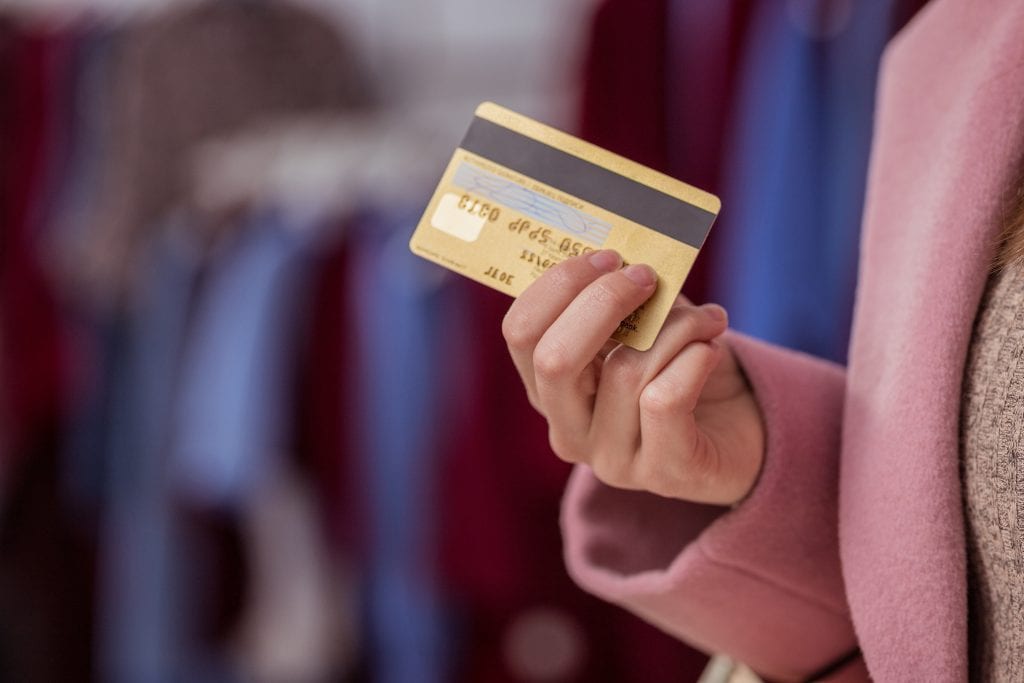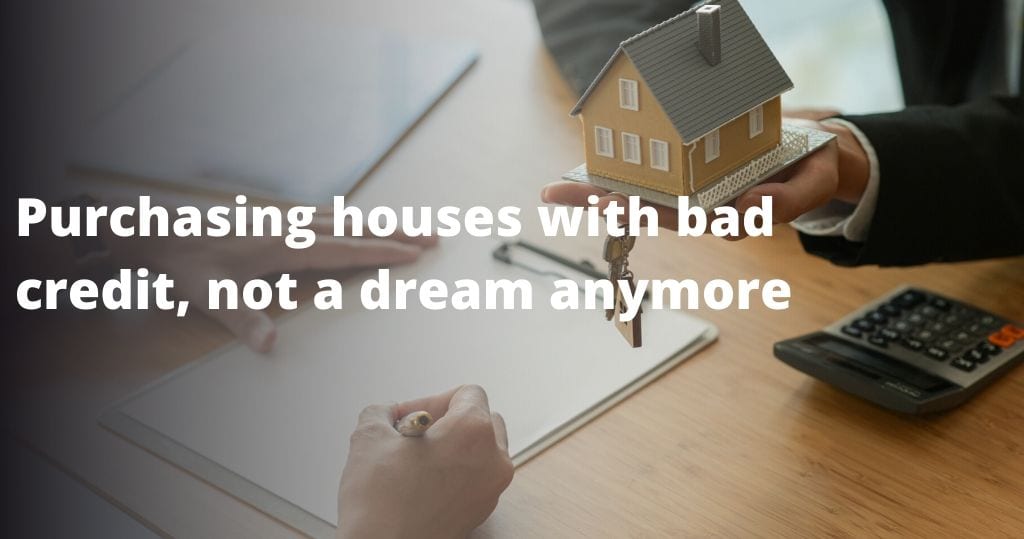Learning how to flip houses with no money and bad credit doesn’t have to be a dream. It is attainable for those that are patient, who have income, and are fine to turn to a private lender.
Contents
Credit Is Just a Tool

Your credit is a tool you can use to access a variety of financial benefits. Having a high credit rating and credit history can help you get some of the best interest rates on many credit products, such as credit cards, car loans, and, of course, mortgages. However, what happens to your financial outlook when you have a low credit rating? This matters a lot when learning how to flip houses with no money and bad credit.
You May Be High Risk
Nowadays, many people do very well without owning or renting a car. Some may even operate without any credit cards in their wallets. Although many Americans are content just to rent an apartment, there is a large part of us who seek to achieve a particular objective: to own a house to raise a family.

However, for people with bad credit, the chances may seem slim. Bad credit mortgages are commonly called “high risk” mortgages, because of the level of financial risk that both the borrower and the lender take. So, let’s talk about the mortgage process for borrowers with bad credit. After all, learning how to flip houses with no money and bad credit can be difficult, and your credit may not be so bad.
Before we continue, let’s be familiar with the FICO range for credit:
- Poor: 579 and lower
- Fair: 580–669
- Good: 670–739
- Very good: 740–799
- Exceptional: 800+
Consider these Factors
If you try to go about figuring out how to flip houses with no money and bad credit, there are a few essential factors that almost all lenders consider when considering potential borrowers for mortgages. First, you have to know your audience, are you going to be working with banks, trust companies, or a private lender. Although each lender has a different approval process for their mortgages, here are the most critical points in the financial history of a potential borrower that will usually be examined:

Credit Score: The higher the credit rating of a borrower, the more likely he is to obtain a favorable mortgage rate from a traditional lender. Most major banks and other major lenders will require a credit score of 650 or higher before considering someone as a potential lender. This matters when flipping houses with bad credit.
Credit / History: Keep in mind that your credit rating and your credit history are two separate entities, and major lenders will scrutinize both. Not only will lenders be able to see who you may owe money to, but they will also have a detailed account of how you have used your credit in the past.
Income and Employment History: Lenders want to be assured of the borrower’s ability to repay, which means that a household’s income can often be just as important as the credit score.
Down payment: The more a borrower can give a down payment, the more chances he will have to get his mortgage. In general, borrowers with good credit are considered low risk, so down payments of up to 5% of the value of a home are accepted. However, borrowers with low credit will likely need to make a down payment of at least 20%.
Debt History: Since a mortgage is one of the most expensive things a borrower can have, potential lenders will surely examine the debts of the user. This means that unpaid credit card bills, car loan payments, or other high-interest debt, will affect a borrower’s chances of getting a mortgage.
Property value: This factor is especially crucial for potential bad credit borrowers who work with subprime or private lenders. After the borrower in question finds a home, he must have it appraised and classified according to its value as property. If the lender doubts a bad credit borrower, he will need to be assured that the property is worth the investment he is going to make, in a case where the borrower would be in default.
How To Flip Houses With No Money And Bad Credit
It is still possible to get a mortgage, even if you have made a consumer proposal or bankruptcy at one time or another. Believe it or not, there are several ways you can go about figuring out how to flip houses with no money and bad credit. Here are some steps you can take to get a high-risk mortgage.

Be patient: Taking the time to rebuild your credit will always work in your favor if you are looking for a mortgage. Patience is particularly essential for those who have gone bankrupt. Most conventional lenders will probably not even approve you for a minimum of 2 years after the end of your case. So, it is best to take the time to improve your finances and go back to a higher credit score and keep it. When purchasing houses with bad credit patience is absolutely key.
Find a stable job: If you have good credit and a decent income or you are self-employed. Conventional lenders will undoubtedly approve you for a mortgage, however, if you have bad credit, bankruptcy, or unstable employment history. This will only add to the opinion of the lender that you are a risky investment. For this reason, it is best to find a reliable source of income, especially if you someday hope to work with a conventional lender.
Turn to subprime or private lenders: If you can’t wait until your credit is rebuilt, you may want to consider going to a lender who is dealing with bad credit borrowers. If your credit score is below 600, you may have no choice but to find a private lender. And if your credit rating is slightly higher but not excellent, you can qualify with a trust company or other lending institution for bad credit.
On the other hand, with private lenders, instead of being forced to put a down payment of 5% on your house, with a mortgage rate of 3-4%, you will probably have to put 20% or more, and your rate will be 10-15% or maybe even more. If you are purchasing houses with bad credit, my preference would be for you to work private lenders. The focus is more on the property than you personally, which when flipping houses with bad credit is an advantage.
Save for a larger down payment: Because of your reduced chances of obtaining a mortgage from a conventional lender, you should take the time to save your money for a larger down payment. Not only will it help you to qualify with a subprime lender if you need it, but it is also a sign that you are improving your finances.
Ultimately proving to lenders that you are less of a financial risk to the conventional lenders with whom you could apply in the future. A substantial down payment also means that the repayment period of your mortgage will be shorter, or you could choose to make smaller payments, by amortizing your sub-prime mortgage over a more extended period. For individuals attempting to understand how to flip houses with no money and bad credit, this point can be a real deal maker.
Improve your credit rating: Take the time and make an effort to rebuild your damaged credit rating. You can do this by being responsible for the credit products and financial commitments you still have. This means that you pay all of your bills on time and in full, no matter what they relate to. If you can’t afford to pay your credit card statement, at least make sure you meet the minimum monthly payments.
If you do not qualify for an unsecured credit card, try using a secured credit card until you are free. However, it is essential not to make too many requests for new credit in the same period. It probably makes sense to pursue this path if you are purchasing houses with bad credit. Even though we recommend working all options in a parallel manner, you will never know when you can improve your return on properties when your credit improves.
Try out wholesaling: Mostly thought by gurus, wholesaling is the activity of discovering fantastic deals, selling them, and having them flipped for a larger price to a cash consumer. This approach is carried out without the use of a single dollar of income or the need for credit. So, if all else fails when purchasing houses with bad credit, you can still make money.
Bottom-line it is completely possible to grasp how to flip houses with no money and bad credit and to be incredibly successful as well.
DOWNLOAD PDF [How To Flip Houses with No Money and Bad Credit: 6 Insane Tricks]



